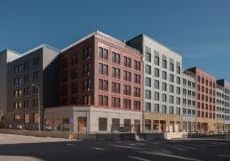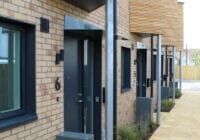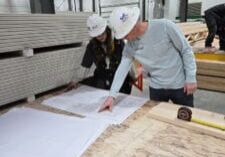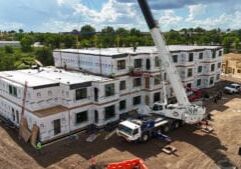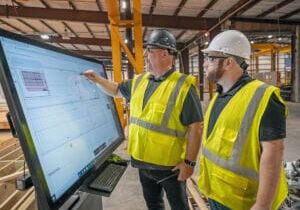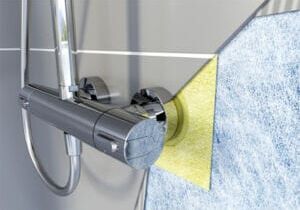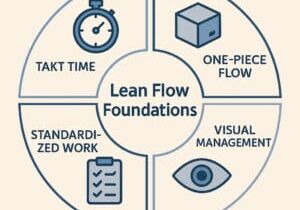The Field Office: How to Create a Better & Safer Construction Worker Experience

Becca Hubert is the Content Strategist at Falcon Structures.
More construction workers died on the job in 2022 than any other industry sector. The fatality rate has remained consistent for the last decade, with around 10 deaths per 100,000 workers, and construction deaths account for about 21% of all on-the-job deaths of workers in the United States. Consider the heavy machinery, steep heights, and dangerous materials workers in this industry face every day, and the risk factor makes sense. But just because there’s potential for injury and death doesn’t mean the industry should accept these numbers as the norm.
Organizations and associations around construction and occupational safety are calling for action to decrease these harrowing statistics. While training programs and educating workers on best practices are a natural step toward improvement, we’d like to consider another resource: the field office.
Here are a few ways a construction field office can help mitigate risk and promote a culture of safety.
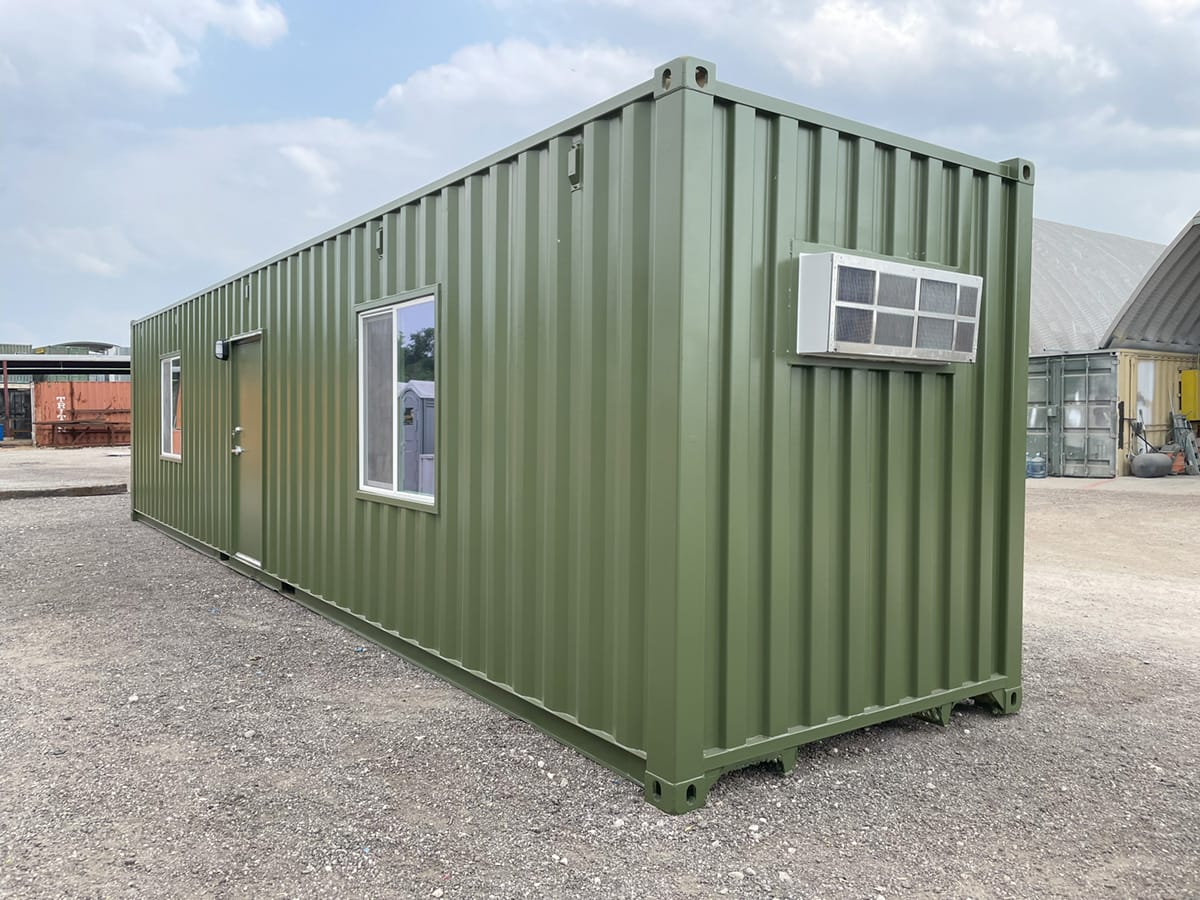
Operations Center
A common complaint on construction sites is the lack of an office. In fact, many of our customers in the industry come to Falcon Structures for a portable container workspace because their foremen have resorted to working in their company vehicles. Aside from the convenience and comfort of a dedicated workspace, a field office can also serve as an operations center on construction sites.
- Give project safety personnel a workspace to conduct
- Control site access with a check-in point for guests or new workers.
- Use as an observation space to keep an eye on operations and safety practices.
- Securely store keys to heavy machinery and heavy-duty tools.
- Store devices like laptops and tablets for logging safety reports.
Safety Hub
Since construction sites relocate often, workers may not have a clear understanding of where to access safety gear and first aid kits from site to site. A portable field office can help enforce a standard of safety for construction crews, even as it relocates with the job.
- Store and distribute personal protection equipment (PPE), like harnesses, hard hats, and high visibility vests.
- Use as a center for safety messaging, like bulletin boards with notices and safety procedures.
- Conduct meetings for safety training and daily check-ins.
- Store first aid equipment in a standardized and easy-to-access location.
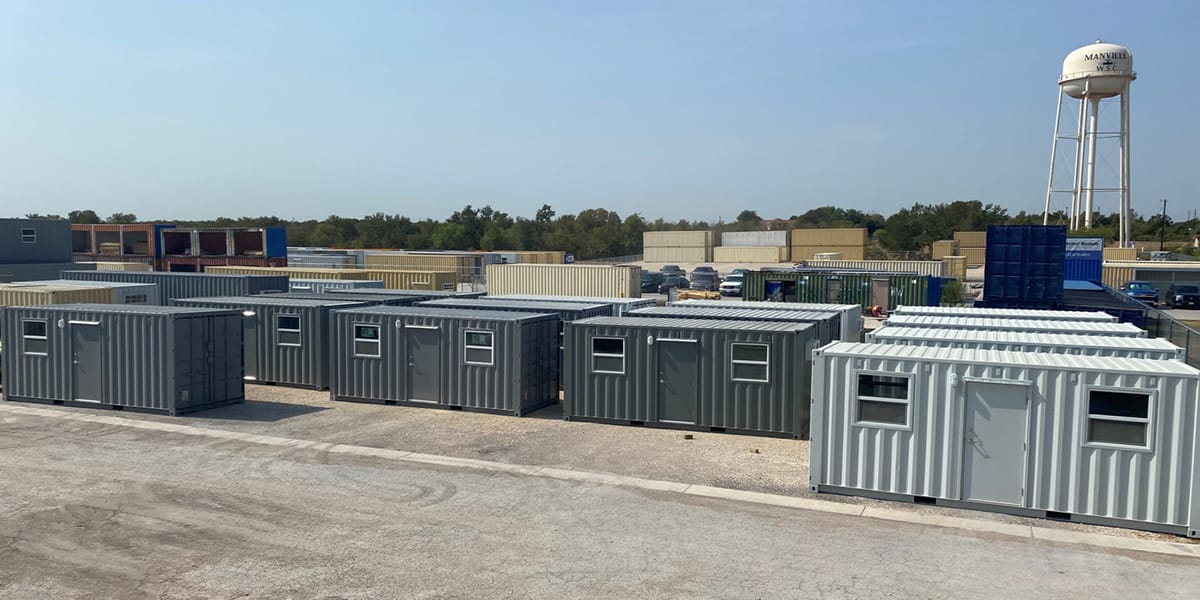
Relocatable field offices and support buildings are valuable assets on the job site.
Worker Respite
While 65.5% of construction deaths occur from the “fatal four” (falls, struck by object, electrocution, and caught in or between something), the toll on construction workers’ physical and mental well-being should not be ignored. In an industry that is notorious for its suicide rate and drug and alcohol abuse among workers, meeting the basic needs for comfort, bathrooms, and break areas can drastically improve worker well-being.
- Use a climate-controlled field office to cool off from working in dangerously hot weather.
- Modify a field office to include clean, climate-controlled restrooms so workers don’t have to walk too far to use facilities, brave rancid porta potties, or “hold it” for an unhealthy amount of time.
- Create a dedicated break area with air conditioning, kitchenettes, restrooms, and space for tables and chairs so workers can take proper breaks.
The statistics around construction worker safety and well-being are alarming, but there is a heartening culture of change on the horizon. Industry leaders and worker advocates are embracing new ways to shake up the bleak norms that have plagued construction for decades. A portable field office is a practical, versatile, and surprisingly powerful resource in the effort to save and improve the lives of construction workers.
More from Modular Advantage
Homes as Essential Infrastructure
The housing crisis is nothing new. Across the world, federal, state, and municipal governments of all sizes are struggling with how to provide more affordable housing—quickly—to those who need it. In Canada, Paul Halucha, Deputy Minister of Housing, Infrastructure, and Communities Canada (HICC), argues that the federal role in housing has shifted from funding at arm’s length to actively shaping outcomes.
Building the Future, Offsite
In the face of a national housing crisis, England stands at a critical inflection point where innovation, scale, and public-private partnerships must converge to meet an urgent need: more homes, and fast. Homes England is helping reshape the housing market by actively supporting MMC through a strategic blend of land development, financing, and grants.
How POJI and MOKO Are Industrializing Modular Construction Through Automated Engineering Systems
Working with Scandinavian Industrialized Building System (SIBS), POJI and MOKO helped realize a modular city concept located in Järfälla municipality of Stockholm, Sweden, with 350 apartments, communal areas, restaurants, small shops, and a preschool in a pleasant mix with experiential architecture and greenery.
Inside Boutique Modern’s Mission to Make First Homes Affordable and Efficient in The U.K.
The U.K.-based firm has been in business for 12 years, manufacturing houses for both private clients and local government, with a large chunk of its business coming from “affordable” and social housing. Working in a 32,000 square-foot factory in Newhaven, Sussex, Boutique Modern is changing decades-old thinking about constructing houses, all through the use of modular.
BoulderMOD: Producing Affordable Modular Homes While Training the Workforce of the Future
Colorado has been hit with a double whammy—a decline in the number of skilled construction workers and an increased need for affordable housing. BoulderMOD, a partnership among the city of Boulder, Flatirons Habitat for Humanity, and Boulder Valley School District, is tackling both problems and helping others do the same.
Guerdon: Seeking the ‘Holy Grail’ of Modular Construction
Guerdon, a modular manufacturer in Boise, Idaho, recently won what Laurence (Lad) Dawson, CEO and Managing Partner, describes as the ‘holy grail’ for a modular manufacturer. The RFP calls for a pipeline of six projects, totaling approximately 570
units.
State of Modular in 2025: Facing Reality
The critical and urgent reality is that the modular industry needs to open the doors to collaboration across all sectors. The sooner we stare down these challenges, the sooner we can welcome a new reality where modular is the dominant way to deliver housing for better performance, quality and all at a lower cost.
Modular Multifamily Housing as a Scalable Solution to the Housing Crisis
GreenStaxx provides a real-world, scalable solution through its standardized library of modular-ready multifamily designs and its innovative triple-decker model. Together, these offerings address the industry’s two greatest needs: efficiency and adaptability. By focusing on quality, repeatability, and collaboration, GreenStaxx is helping move modular construction from niche to mainstream and offering a practical path toward solving the housing shortage.
Sealed for Success: The Role of Waterproofing in Modular Construction
Water is one of the biggest threats to any building, causing structural damage, mold growth, and costly repairs if not properly managed. Waterproofing is the first line of defense, ensuring durability and long-term performance. As construction methods evolve, so do waterproofing solutions – moving beyond traditional coatings to advanced, factory-ready systems.
From Volume to Velocity: Scaling Multi-Family Projects Without Losing Control
When projects grow too fast without the right systems, factories run into problems. They miss deadlines, crews burn out, and quality drops. Instead of steady progress, chaos takes over. Things slow down, even with more units going through. That’s because building more isn’t enough—you also need to build smarter. That means shifting focus from volume to velocity.



